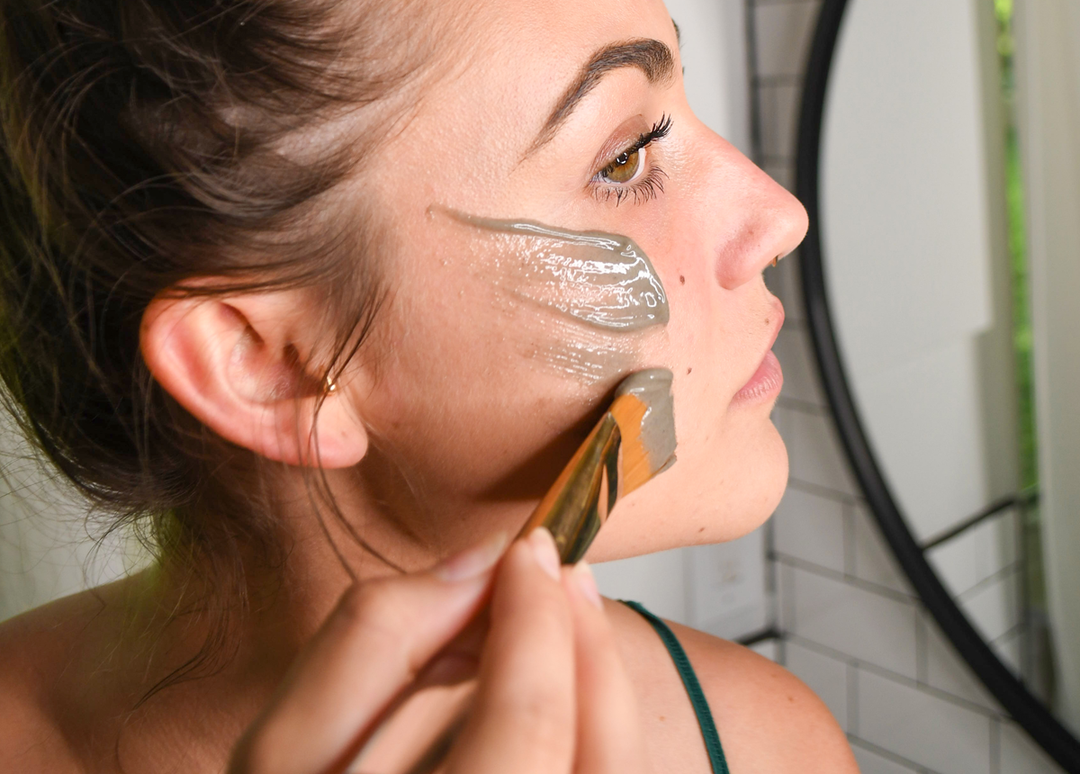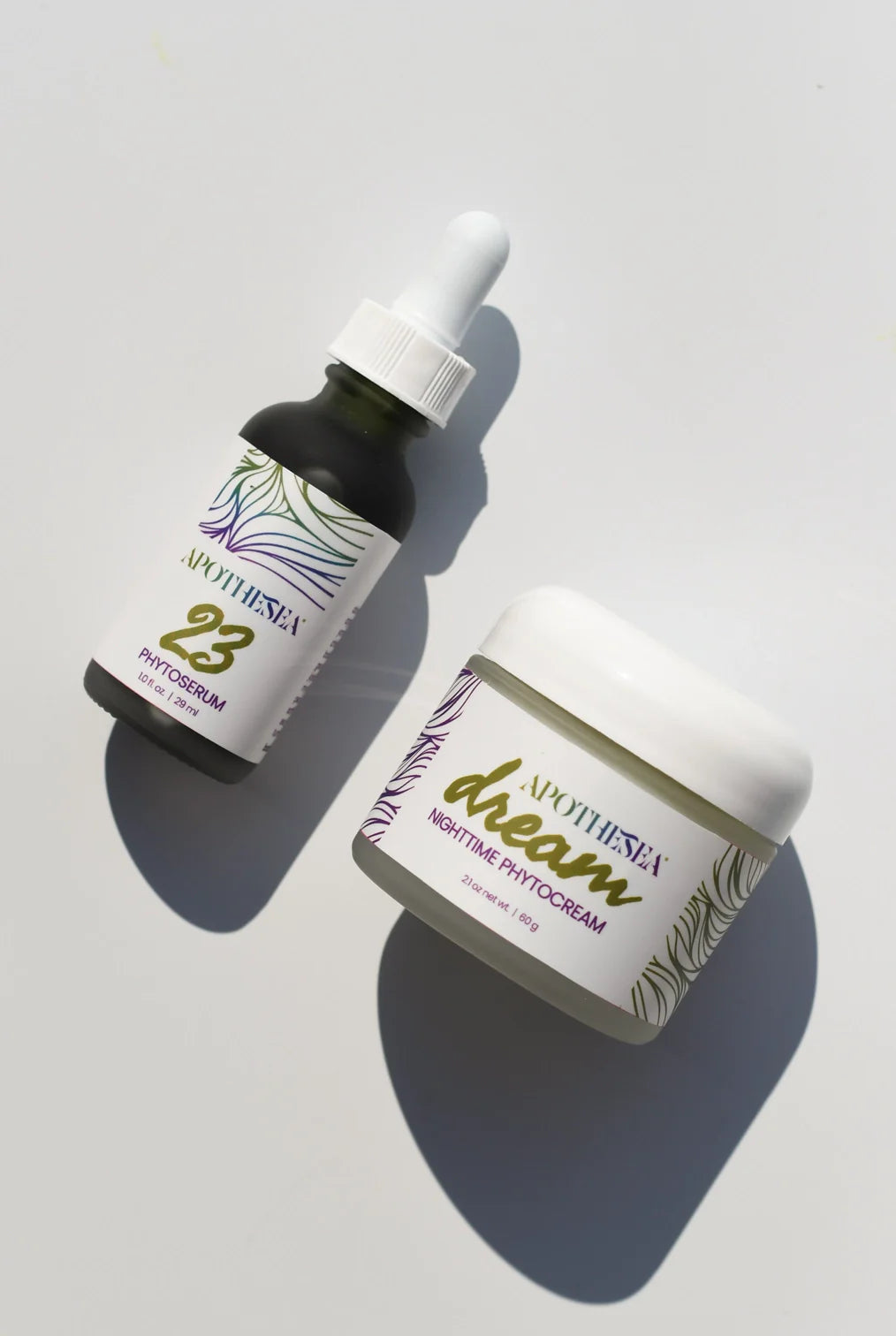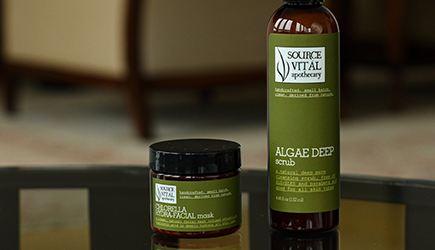Why You Should Strengthen Your Skin Barrier
Although it may not be easy to tell by a quick glance in the mirror, our skin is constantly working hard for us, particularly, our skin barrier. Over the past few years, there’s been a serious buzz surrounding the importance of strengthening our skin barrier, and how a strong skin barrier means healthier skin.
Maintaining a healthy skin barrier means plump, supple, and more youthful-looking skin. Unfortunately, over time, the skin barrier can become weakened and damaged. So exactly what is the skin barrier? And how can we maintain or repair it? Read on to find out what you can do to keep your skin barrier healthy and strong.
What is the Skin Barrier?
To understand what the skin barrier does, you need to know how the skin is structured. Let’s go back to junior high biology class for a moment. Our skin is the largest organ in the body and covers the body's entire outside surface.
Remember seeing that image of a cross-section of the skin in your biology textbook? The skin is made up of three distinct layers: the epidermis (the top layer), the dermis, and the hypodermis. The skin barrier is found in the outermost part of the epidermis.
Many scientists compare the skin barrier to being a brick wall. In this analogy, our skin cells are the “bricks” and everything surrounding the cells is the “mortar” that holds everything together. This “mortar” contains nutrients, such as cholesterol and fatty acids. These nutrient compounds are also known as skin’s “natural moisturizing factor” because they keep the deeper layers of the skill well-nourished and hydrated.
What Does the Skin Barrier Do?
Our skin barrier has several different jobs, which may impact our overall health. The first is it acts as our main protection from stressors, such as pollution and UV radiation. Second, it helps us retain water, keeping our body and skin well-hydrated. Finally, it works to transport vital nutrients to our skin.
Our skin barrier is ultimately what determines how healthy our skin feels (and looks.) When our skin barrier is healthy, the skin will feel more bouncy and hydrated and will have a smoother appearance. Additionally, it will be less prone to sensitivity or skin irritation.
On the flip side, when our skin barrier isn’t working properly, we’re more susceptible to damage. The skin may be very dehydrated, giving a dull and dry appearance. It will also struggle to fight off external stressors (also known as free radicals) that can cause uneven skin tone, sagging, and fine lines.
How Do I Know if My Skin Barrier is Damaged?
Thankfully, it’s fairly easy to tell if you’re suffering from skin barrier damage. You’ll want to look for sensitive, inflamed, or irritated skin, itchiness, dry or scaly patches, bacterial or fungal skin infections, or acne.
The good news is that a damaged skin barrier can be repaired to an extent. It will take a bit of time, care, and effort, depending on how much damage has occurred. You can expect to see results in as little as a few weeks to 6 months.

How Do You Strengthen the Skin Barrier?
Avoid Harming Your Barrier Further
Before reaching for a whole new skincare routine, it’s time to take a step back and look at what you’re currently using and your current skincare habits. Have you ever felt that squeaky clean feeling post-cleanse? Although your skin may feel super clean, you may be stripping the skin and damaging your skin barrier.
Other practices to avoid are using water that’s too hot while cleansing, using harsh, abrasive ingredients, and using too many products. For a gentle, nourishing cleanse, we recommend using our Geranium Cleanser. This ultra-gentle oil-based cleanser is made with pure, all-natural ingredients chosen specifically to care for the look and feel of delicate skin types, while effectively cleansing and removing makeup.
Seek Out Ingredients that Repair
Trade out harsh ingredients for skin-soothing ones. When your skin barrier is compromised, using hydrating ingredients is key. Products that contain antioxidants, fatty acids, and hyaluronic acid ensure that skin is nourished.
Fatty acids are found in many botanical oils, such as our Avocado Oil. This will help reduce water loss, soothe discomfort, and make skin appear more supple. Avocado oil is also good to improve the appearance of lines, wrinkles, sun damage, and wounds.
For an antioxidant boost, seek out powerhouse ingredients like shea butter. Our Max Moisture Cream contains emollient ingredients, like shea and cocoa butter, which help moisturize, nourish, and protect the skin against moisture loss and irritation.
To properly lock hydration into the skin, seek out a dynamic ingredient, like hyaluronic acid. This ingredient acts as a binder to help retain moisture and can draw moisture from the air and hold up to 1,000 times its weight in water! You can find this ingredient in our Algae Serums, an incredible option for those looking to incorporate hyaluronic acid into their skincare routine, but don’t know where to start. Laminaria Digitata extract is also in Algae Serum, which is well known for softening fine lines and wrinkles.
Support Your Microbiome
The skin microbiome is the term that refers to the trillions (yes, trillions!) of bacteria, fungi, and viruses that live on our skin. It acts as the front line of defense when it comes to protecting our skin and body from issues like infections. It can also help us better absorb essential nutrients and support our skin barrier's health. When the skin microbiome becomes unbalanced, skin conditions, such as acne, rashes, eczema, dandruff, and dermatitis may occur.
We’ve all seen the intense 10-step skincare routines, but to have a balanced skin microbiome, you’ll want to focus on quality over quantity. For a streamlined skincare experience, look for multitaskers that can combine multiple steps into one product. Our Custom Facial Cocktail combines 3-4 skincare steps into one easy-to-use product, including a toner, a serum, a treatment, and light hydration.
Click here to read more about how you can support your skin’s microbiome.








Leave a comment